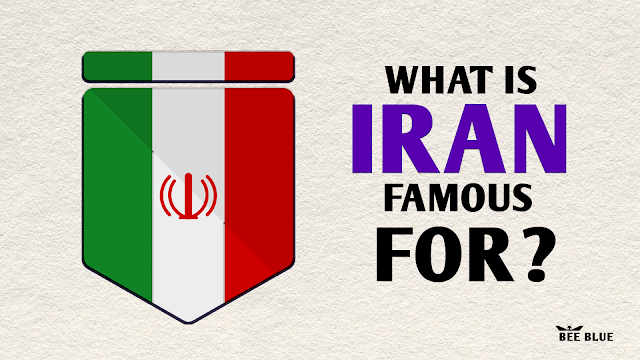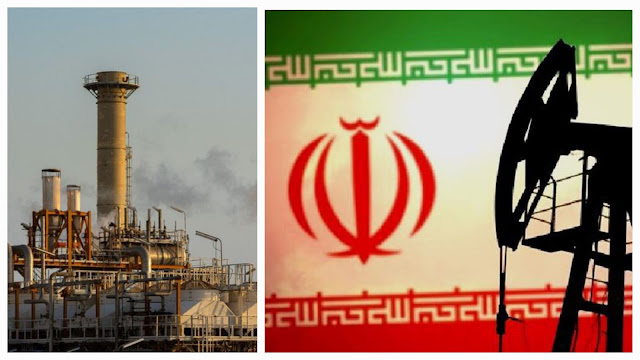Iran is a country of immense beauty, history, and cultural significance, making it one of the most captivating destinations in the world. From the ancient ruins of Persepolis to the colorful bazaars of Isfahan, Iran offers a wealth of experiences for curious travelers. In this comprehensive guide, we’ll explore what Iran is famous for—its heritage, culture, landscapes, and more.
Rich History and Ancient Civilizations
1. The Achaemenid Empire and the Glory of Persepolis
Iran, historically known as Persia, is one of the world’s oldest civilizations, dating back over 5,000 years. Among its most iconic legacies is the Achaemenid Empire, founded by Cyrus the Great in 550 BCE. At its height, this empire stretched from Egypt to India.
 |
| Persepolis, Ancient Persian Empire, Iran |
The ruins of Persepolis, a UNESCO World Heritage Site, are a testament to this grandeur. With towering columns, majestic palaces, and intricate reliefs, Persepolis offers a jaw-dropping glimpse into ancient imperial power and artistic excellence.
2. Cyrus the Great and the First Declaration of Human Rights
 |
| The Cyrus Cylinder, the Founder of Achaemenid Empire |
Cyrus wasn’t just a conqueror—he was a visionary leader. The Cyrus Cylinder, often hailed as the world’s first human rights charter, outlined religious tolerance, equality, and freedom across the empire. Found in Babylon and now housed in the British Museum, it reflects early humanitarian ideals that shaped the Persian ethos.
3. The Sassanid Empire: Art, Architecture, and Zoroastrianism
After the fall of the Achaemenids came the Sassanid Empire (224–651 AD), which further enriched Iran’s cultural and architectural landscape. Grand fire temples, stone carvings, and royal cities highlight this era’s brilliance. It was also during this period that Zoroastrianism, one of the world’s oldest monotheistic religions, flourished and influenced later faiths like Judaism, Christianity, and Islam.
 |
| The Relief of Ardashir’s Victory from Sassanid Era |
Power Beneath the Surface: Iran’s Fuel and Energy Wealth
1. A Global Energy Powerhouse
Iran is one of the most resource-rich countries in the world. It holds the fourth-largest proven crude oil reserves and the second-largest natural gas reserves globally. This abundance of hydrocarbons has played a central role in the country's economy and its strategic importance on the global stage.
The country exports millions of barrels of oil daily (when not under sanctions) and has developed a vast domestic refining and petrochemical industry. Major oil fields like Ahvaz, South Pars, and Azadegan are vital to both the local economy and international energy market.
2. South Pars Gas Field: The Largest in the World
One of Iran’s most remarkable assets is the South Pars/North Dome gas field, which it shares with Qatar. It is the largest natural gas field in the world, accounting for nearly 40% of Iran's total gas reserves. This energy wealth has made Iran a key player in regional energy politics and a member of OPEC (Organization of the Petroleum Exporting Countries).
3. Nuclear Energy and Controversy
Iran has also developed a nuclear energy program, officially for civilian and energy purposes. However, this program has drawn international scrutiny and negotiations, especially regarding uranium enrichment and potential weapons capabilities. Despite the controversy, Iran continues to pursue nuclear energy as a strategic and scientific asset, with facilities like Bushehr Nuclear Power Plant already operational.
Strategic Strength: Iran’s Military and Defense Capabilities
Artistic Brilliance: Persian Art and Architecture
1. The Timeless Elegance of Persian Gardens
A walk through a Persian garden is like stepping into paradise. Designed with symmetry, flowing water, and lush flora, these gardens represent balance and beauty. The Fin Garden in Kashan, another UNESCO treasure, is a perfect example of Persian landscape mastery. Their design has inspired gardens across the Islamic world, India (like the Mughal gardens), and beyond.
2. Mesmerizing Islamic Architecture
Iran's mosques and monuments are architectural marvels. From the Shah Mosque to the Sheikh Lotfollah Mosque in Isfahan, these structures dazzle with intricate tilework, domes adorned with turquoise and gold, and calligraphy that seems to float on air.
Each detail in these buildings reflects deep symbolism and spiritual devotion, making Iranian cities some of the most photogenic places in the world.
3. The Legacy of Persian Carpets
When you think of Iran, think Persian carpets—arguably the most famous textile art globally. Woven by hand with patterns that echo local nature, history, and mythology, each carpet is a masterpiece. Cities like Tabriz, Isfahan, and Kashan produce some of the finest rugs, treasured by collectors from Tokyo to Paris.
The Soul of Iran: Poetry, Literature, and Mysticism
1. Ferdowsi and the Epic Shahnameh
Iran’s literary crown jewel is the Shahnameh (Book of Kings), written by Ferdowsi. This epic tells Persia’s story from mythical times to the fall of the Sassanids. Written in pure Persian, it preserved the language and identity of Iran during times of foreign rule and remains essential reading in Persian literature.
 |
| Shahnameh by Ferdowsi, Battle scene from the epic poem The Shahnameh written by Persian poet Abu ʾl-Qasim Firdowsi Tusi (c. 940–1020), aka Ferdowsi. |
2. Rumi: The Mystic Poet Who Touched the World
Although born in present-day Afghanistan, Jalal al-Din Rumi wrote in Persian and is deeply tied to Iran’s literary soul. A Sufi mystic, his verses explore love, loss, faith, and divine union. Today, Rumi is one of the most widely read poets in the world, transcending cultures and religions.
3. Hafez and the Spirit of Shiraz
No mention of Persian poetry is complete without Hafez. His romantic and mystical poetry remains widely quoted in Persian homes, music, and art. Visiting his tomb in Shiraz is a spiritual experience, often described as a pilgrimage by poetry lovers.
A Feast for the Senses: Persian Cuisine
Iranian food is a delightful symphony of flavors—fresh herbs, aromatic spices, and a perfect balance of sweet and savory.
1. Heavenly Kebabs
From chelo kebab (saffron rice with grilled meat) to joojeh kebab (marinated chicken), Iranian kebabs are iconic. Always served with grilled tomatoes, pickled vegetables, and fresh herbs, they’re a staple at family gatherings and festive meals.
2. Rich and Flavorful Stews (Khoresh)
Iranian stews, or khoresh, are slow-cooked with layers of flavor. Ghormeh sabzi (herb stew with beans and meat) and fesenjan (a walnut and pomegranate stew) are among the most beloved dishes, often served over fragrant basmati rice.
3. Persian Rice and Saffron Magic
Iranian cuisine elevates rice to an art form. Tahdig (crispy rice crust) is a beloved delicacy, often fought over at the dinner table! Saffron, rosewater, barberries, and nuts turn everyday rice into a celebration.
Beyond the Cities: Iran’s Natural Wonders
While Iran is known for its culture and history, its natural landscapes are equally awe-inspiring.
Dasht-e Kavir and Dasht-e Lut: Iran’s deserts offer surreal beauty—rolling dunes, salt flats, and starlit skies perfect for desert camping.
Caspian Sea and Hyrcanian Forests: Northern Iran surprises with lush forests, mountain ranges, and beachside towns like Ramsar and Mazandaran.
Mount Damavand: The tallest volcano in Asia and a symbol of strength in Persian mythology, it's a haven for trekkers and nature lovers.
Iran is more than headlines and history—it’s a land of hospitality, poetry, art, and timeless beauty. Whether you’re marveling at ancient ruins, savoring a saffron-scented meal, or getting lost in a bazaar filled with colors and scents, Iran offers an unforgettable journey for the soul.
■ 𝙍𝙚𝙨𝙥𝙚𝙘𝙩 𝙏𝙤 𝙏𝙝𝙚 𝘼𝙡𝙡 𝙏𝙝𝙚 𝘾𝙤𝙥𝙮𝙧𝙞𝙜𝙝𝙩𝙨 𝘾𝙤𝙣𝙩𝙚𝙣𝙩𝙨 𝙊𝙬𝙣𝙚𝙧𝙨.


